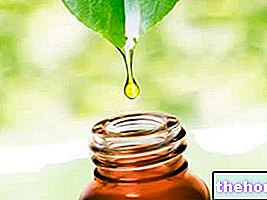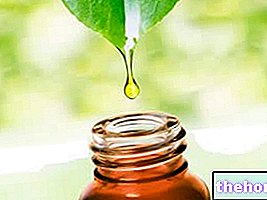Homeopathy differs from classical pharmacology also for the techniques of preparation of the remedies.
Homeopathic dilution
In the "general article we have seen how in the homeopathic field all substances present in nature are used - or can be used - not as they are found, but diluted. In this sense, the sharp contrast with classical pharmacology, which tends to isolate and concentrate more and more active ingredients of health interest.
The first and most important feature of homeopathic preparations is therefore the dilution. If on the one hand this peculiarity makes homeopathy a science practically immune to side effects (to which modern pharmacology is heavily burdened), on the other hand it raises many doubts about its scientific nature, given that so many dilutions are often used as to eliminate the content of the original substance. On the other hand, modern pharmacology, while being very effective in emergency conditions, where it is a question of saving lives in extreme cases (wars, accidents, surgeries, acute illnesses, etc.), often fails - directly or indirectly (by excess of side effects) - in the treatment of complex diseases such as autoimmune diseases, multiple sclerosis, allergic diseases, gastrointestinal dysfunctions, skin diseases such as psoriasis etc.
Homeopathic dynamization (empowerment)
In addition to dilution, the techniques used for the production of homeopathic remedies exploit a second element of fundamental importance: dynamization (or "strengthening").
Dynamization consists in shaking the diluted product, to be carried out at least 100 times vertically, with clear, fast and short-distance movements (about 20 centimeters).
Currently, for obvious reasons, most companies use special devices for the dynamization of homeopathic products; however, there are still producers who prefer manual preparation, claiming its greater effectiveness.
In conclusion, the preparation of homeopathic products consists of successive steps, in which a basic substance (for example arsenic, chamomile or coffee) is first diluted and subsequently dynamized.
Hahnemannian dilutions
In homeopathy, dilution commonly takes place according to a factor of 10, 100 or 50,000: dilutions carried out with decimal passages are called "decimals" and are indicated with "D" (sometimes, more rarely, with "X"). Similarly, the dilutions that occur with centesimal passages are called "centesimal" and are indicated with "CH"; the "C" stands for "centesimal", while the "H" is the initial of Hahnemann (1755-1843), surname of the German physician, founder of homeopathy.
Hahnemann initially advocated the use of centesimal dilutions. Only in later times the fifty thousandth dilutions, indicated by the Roman numbering "LM", were preferred.

As an example, consider table salt, sodium chloride, which in homeopathy is called by its Latin name, Natrum muriatìcum.
Suppose we use the centesimal technique: we then take a gram of table salt and dissolve it in 99 grams of water, shaking the bottle vigorously 100 times vertically: what we get is the first centesimal dilution, which is indicated with 1 CH. Subsequently, 1 cubic centimeter (1 cc) of the 1 CH dilution is taken and dissolved in 99 cc of water, dynamized and 2 CH is obtained; 1 cc of the 2 CH is taken, dissolved in 99 cc of water, dynamized and 3 CH is obtained, and so on.
Suppose we are using the decimal technique; take a gram of table salt and dissolve it in 9 grams of water, shaking the bottle vigorously 100 times vertically: what we get is the first decimal dilution, which is indicated with 1 DH. Subsequently, 1 cubic centimeter (1 cc) of the 1 DH dilution is taken and dissolved in 9 cc of water, dynamized and 2 DH is obtained; 1 cc of 2 DH is taken, dissolved in 9 cc of water, dynamized and 3 DH is obtained and so on.
The dilutions most used in homeopathy are 4, 5, 7, 9, 15, 30, 60, 100 and 200 CH; this naturally also applies to decimals, while the most common LMs are 6, 18 and 30 LM.
Less commonly used dynamics are thousandths (Latin symbol "M"), ten thousandths (symbol "XM" or "DM") and millionths (symbol "MM"). For the preparation of these dynamizations, new glass containers are used for each step: one can imagine, therefore, that in order to prepare a thirteenth-century dynamization, as many as 200 steps are required, with 200 different glass containers!
Dynamization VS dilution
In homeopathy the dynamization of the dilution counts more, since the dilution simply removes the potential toxicity of the substances used, while the dynamization gives the dilution the much discussed "energy quid", which constitutes the basis of action of the remedy.
This is the reason why in homeopathy, when we refer to a product, we speak of it in terms of dynamization and not of dilution. They consider themselves
"Low" dynamizations up to 9 (D or CH or K or LM etc.),
«Averages» those between 10 and 15;
"High" those above 30 to 200;
"Very high" dynamizations above 200. From the point of view of the clinical effect, for example, a 7 CH is closer to a 7 D, than to a 14 D (which would be equivalent to a 7 CH, based on the dilution ).
A synonym for dynamization is the term "power", used above all by the German and Anglo-Saxon schools.Always referring to the clinical effect, the low potencies (or dynamizations) act more on rapidly growing tissues, in particular the mucous membranes, the skin, the bone marrow and the gastrointestinal territory in general; the medium potencies on the muscles, the liver, the kidney, bone, cartilage; the high powers on the endocrine, the peripheral nervous system, the neurovegetative innervation, the sub-cortical nuclei and partly on the central nervous system; the very high powers mainly on the central nervous system in its higher functions.
Korsacovian dilutions "
Disclaimer
The practices described here are not accepted by medical science, have not been subjected to experimental tests conducted with a scientific method or have not passed them. This information is for illustrative purposes only.




























